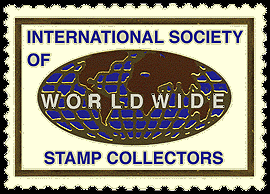Post by iswscwebmaster on Oct 13, 2016 0:00:34 GMT
Located at the mouth of the Mersey River, Liverpool, Nova Scotia, Canada was home port to many privateers. During the War of American Independence, the War of 1812 and the Napoleonic Wars the port of Liverpool and most towns along coastal Nova Scotia were home ports to privateers.

A privateer is defined as a privately owned armed vessel whose owners are commissioned to carry out naval warfare. A privateer is issued a 'Letter of Marque" that was basically a licence to operate a privateer vessel. In Nova Scotia, an owner would have to post a bond of over £1000.00 to ensure the privateers good behaviour. They differ from pirates because pirates are criminals and privateers are allowed by law to carry out naval warfare against an enemy nation.
As claimed by the postmark above, Liverpool is the 'Port of the Privateers', with no less than 26 Privateer ships making it their home port. One famous privateer from Liverpool is the Charles Mary Wentworth. She was armed with 16 guns¹ and a crew of 80. During her 4 cruises as a privateer she captured 11 prizes (ships). She was also responsible for the capture of a Spanish Island and fort off the coast of Venezuela.
The Duke of Kent was another famous privateer. Initially she was the Spanish brigantine Nostra Sen. Del Carmen; she was a captured and taken by the Charles Mary Wentworth. She was the largest of the privateers during the Napoleonic wars and captured several Spanish held Islands off the coast of Venezuela. The Duke of Kent was 196 tons and crewed by 100 men. She carried 20 guns, 30 small arms and 100 cutlasses.
Also from Liverpool was the brig Rover, built over the winter of 1799-1800, she was owned by Simeon Perkins, Snow Parker and William Lawson. She is most famous for a battle against the Spanish Schooner Santa Rita and 3 accompanying gun boats. The battle ended with the Rover and her Captain, Alexander Godfrey, capturing the Spanish ship. The Rover was 100 tons and crewed by 60 men. She carried 16, 4 pound guns.
This brief history of privateering demonstrates that Liverpool can indeed be considered the 'Port of the Privateers'.
¹ A gun in naval terminology is the equivalent to a canon on land.
Sources:
Wikipedia. en.wikipedia.org/wiki/Liverpool,_Nova_Scotia
Canada's History Magazine. www.canadashistory.ca/Magazine/Online-Extension/Articles/Pirate-Havens.aspx Wikipedia. en.wikipedia.org/wiki/Privateer
THE CANADIAN PRIVATEERING HOMEPAGE. www.chebucto.ns.ca/~jacktar/privateering.html
Nova Scotia Archives. www.gov.ns.ca/nsarm/virtual/privateers/ -
Rob Ossian's Pirate's Cove. www.thepirateking.com/terminology/definition_privateer.htm
Wikipedia. en.wikipedia.org/wiki/Rover_(privateering_ship)

A privateer is defined as a privately owned armed vessel whose owners are commissioned to carry out naval warfare. A privateer is issued a 'Letter of Marque" that was basically a licence to operate a privateer vessel. In Nova Scotia, an owner would have to post a bond of over £1000.00 to ensure the privateers good behaviour. They differ from pirates because pirates are criminals and privateers are allowed by law to carry out naval warfare against an enemy nation.
As claimed by the postmark above, Liverpool is the 'Port of the Privateers', with no less than 26 Privateer ships making it their home port. One famous privateer from Liverpool is the Charles Mary Wentworth. She was armed with 16 guns¹ and a crew of 80. During her 4 cruises as a privateer she captured 11 prizes (ships). She was also responsible for the capture of a Spanish Island and fort off the coast of Venezuela.
The Duke of Kent was another famous privateer. Initially she was the Spanish brigantine Nostra Sen. Del Carmen; she was a captured and taken by the Charles Mary Wentworth. She was the largest of the privateers during the Napoleonic wars and captured several Spanish held Islands off the coast of Venezuela. The Duke of Kent was 196 tons and crewed by 100 men. She carried 20 guns, 30 small arms and 100 cutlasses.
Also from Liverpool was the brig Rover, built over the winter of 1799-1800, she was owned by Simeon Perkins, Snow Parker and William Lawson. She is most famous for a battle against the Spanish Schooner Santa Rita and 3 accompanying gun boats. The battle ended with the Rover and her Captain, Alexander Godfrey, capturing the Spanish ship. The Rover was 100 tons and crewed by 60 men. She carried 16, 4 pound guns.
This brief history of privateering demonstrates that Liverpool can indeed be considered the 'Port of the Privateers'.
¹ A gun in naval terminology is the equivalent to a canon on land.
Sources:
Wikipedia. en.wikipedia.org/wiki/Liverpool,_Nova_Scotia
Canada's History Magazine. www.canadashistory.ca/Magazine/Online-Extension/Articles/Pirate-Havens.aspx Wikipedia. en.wikipedia.org/wiki/Privateer
THE CANADIAN PRIVATEERING HOMEPAGE. www.chebucto.ns.ca/~jacktar/privateering.html
Nova Scotia Archives. www.gov.ns.ca/nsarm/virtual/privateers/ -
Rob Ossian's Pirate's Cove. www.thepirateking.com/terminology/definition_privateer.htm
Wikipedia. en.wikipedia.org/wiki/Rover_(privateering_ship)

